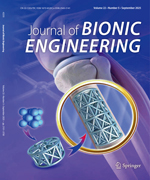Inspired by the unique, agile and efficient flapping flight of insects, we present a novel sub-100 mg, electromagnetically driven, tailless, flapping-wing micro robot. This robot utilizes two optimized electromagnetic actuators placed back to back to drive two wings separately, then kinematics of each wing can be independently controlled, which gives the robot the ability to generate all three control torques of pitch, roll and yaw for steering. To quantify the performance of the robot, a simplified aerodynamic model is used to estimate the generated lift and torques, and two customized test platforms for lift and torque measurement are built for this robot. The mean lift generated by the robot is measured to be proportional to the square of the input voltage amplitude. The three control torques are measured to be respectively proportional to three decoupled parameters of the control voltages, therefore the modulation of three control torques for the robot is independent, which is helpful for the further controlled flight. All these measured results fit well with the calculated results of the aerodynamic model. Furthermore, with a total weight of 96 mg and a wingspan of 3.5 cm, this robot can generate sufficient lift to take off.

 Table of Content
Table of Content
 Table of Content
Table of Content